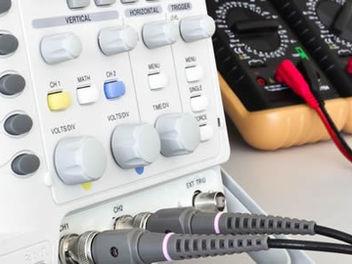Why Emergency Light Testing Is Crucial for Workplace Safety
- Guy hudson
- Mar 11
- 4 min read
Workplace safety is a top priority for any organization, and one crucial element that often gets overlooked is emergency lighting. When power outages or emergencies occur, properly functioning emergency lights guide employees and visitors safely out of the building, reducing panic and preventing injuries. Regular testing of emergency lighting is not only a compliance requirement but also a vital part of a robust safety strategy.
Beyond regulatory obligations, emergency light testing enhances overall preparedness, minimizes liability risks, and strengthens an organization’s safety culture. Without regular inspections, emergency lighting systems can fail due to power supply issues, faulty wiring, or battery degradation—putting lives at risk. Therefore, businesses must understand the significance of emergency light testing and implement best practices to maintain compliance and safety.
This blog explores the importance of emergency light testing, compliance requirements across industries, testing procedures, and best practices to ensure workplace safety.
Understanding Emergency Lighting Systems
Emergency lighting systems are designed to activate automatically in the event of power failures, providing essential illumination for safe evacuation and emergency response. These lights ensure that stairways, exits, and high-traffic areas remain visible, reducing hazards associated with darkness. They are particularly crucial in high-rise buildings, factories, healthcare facilities, and educational institutions where quick evacuation is necessary to prevent casualties.
Types of Emergency Lighting
There are two main types of emergency lighting:
Maintained Luminaires: These remain illuminated at all times and are commonly used in high-occupancy buildings such as hospitals and commercial facilities.
Non-Maintained Luminaires: These activate only during power failures, conserving energy during normal operations.
Combined Emergency Lighting Systems: These systems integrate both maintained and non-maintained lighting solutions to offer maximum safety and efficiency.
Self-Testing Emergency Lighting: Modern self-testing systems conduct automatic checks at scheduled intervals, reducing the need for manual inspections while ensuring compliance with regulatory standards.
Understanding these variations is essential when determining the right system for your workplace and ensuring it meets regulatory requirements.
Importance of Regular Emergency Light Testing
Routine testing of emergency lighting systems is necessary to ensure they function correctly during emergencies.
Ensuring Operational Readiness
Emergency lighting failures during power outages can put lives at risk. Regular testing ensures that systems work as intended and that issues are addressed before an emergency occurs. Unchecked systems may have faulty batteries, outdated wiring, or malfunctioning circuits that go unnoticed until an emergency arises.
Compliance with Safety Standards
Failing to conduct regular tests can lead to regulatory non-compliance, resulting in fines or operational shutdowns. Routine checks help businesses meet safety requirements without disruptions. Many countries impose strict penalties on non-compliance, which can include suspension of business operations or hefty fines.
Minimizing Liability
Workplace accidents due to inadequate emergency lighting can result in lawsuits and reputational damage. Proactive maintenance and testing reduce these risks and demonstrate a commitment to safety. Employers who invest in safety measures not only protect their employees but also enhance their reputation as responsible businesses.
Recommended Testing Procedures and Frequencies
Implementing a structured testing schedule ensures emergency lighting systems remain functional and compliant.
Monthly Testing
Brief functional test to verify all lights activate correctly.
Check battery charge levels and illumination intensity.
Inspect for physical damage or obstructions.
Confirm that control panels indicate proper function.
Annual Testing
Conduct a full-duration test, typically lasting 90 minutes.
Evaluate system performance and replace faulty components.
Update maintenance logs to track compliance and system health.
Inspect electrical connections and wiring for wear and tear.
Documentation
Keep detailed records of all tests, including dates, results, and corrective actions taken.
Maintain logs for audit purposes to demonstrate compliance.
Digitize records to improve tracking and accessibility for safety audits.
Best Practices for Maintaining Compliance
To ensure workplace safety and regulatory adherence, organizations should follow these best practices:
Engage Qualified Personnel
Have testing and maintenance performed by trained professionals who understand compliance requirements.
Train internal staff on basic emergency lighting maintenance procedures.
Outsource inspections to certified compliance experts for accuracy.
Stay Updated with Regulations
Regularly review changes in national and international safety standards.
Conduct periodic audits to ensure compliance with evolving regulations.
Participate in safety training programs and workshops to stay informed.
Invest in Quality Equipment
Use emergency lighting systems that meet industry standards for performance and durability.
Implement modern lighting solutions with self-testing capabilities to streamline maintenance.
Upgrade outdated lighting systems to LED-based emergency solutions for efficiency and longevity.
Addressing Common Challenges in Emergency Light Testing
Despite the importance of testing, businesses often face challenges in maintaining compliance. Identifying and overcoming these obstacles is key to a robust emergency lighting strategy.
Access Issues
Ensure emergency lighting fixtures are easily accessible for regular testing.
Implement a maintenance schedule that accounts for building layout and accessibility constraints.
Design emergency lighting systems with remote monitoring capabilities for efficiency.
Battery Failures
Conduct frequent battery inspections and replacements to prevent unexpected failures.
Use high-quality rechargeable batteries with longer lifespans for increased reliability.
Implement a battery rotation strategy to ensure continued power supply.
Inadequate Documentation
Establish a standardized record-keeping system for all tests and maintenance activities.
Digitize records for easy access and retrieval during audits.
Use automated tracking software to schedule and record inspections.
Conclusion
Emergency light testing is a crucial aspect of workplace safety and regulatory compliance. By implementing regular testing, following compliance requirements, and adopting best practices, businesses can ensure that their emergency lighting systems function optimally when needed.
Proactive maintenance and compliance not only protect lives but also safeguard organizations from legal and financial risks. Businesses that prioritize emergency lighting testing demonstrate a strong commitment to safety, operational excellence, and regulatory adherence.
Ensuring the safety and compliance of your workplace's electrical systems is paramount. At Global Compliance UK, we specialize in comprehensive electrical testing and safety services, including:
Portable Appliance Testing (PAT): Ensuring all portable electrical devices are safe for use.
Electrical Installation Condition Reports (EICR): Assessing the safety and condition of electrical installations.
Emergency Light Testing: Verifying the functionality of emergency lighting systems.
Fire Extinguisher Maintenance: Keeping fire safety equipment in optimal condition.
With over 25 years of experience, our expert team is dedicated to helping businesses across the South of England and South Wales maintain a safe and compliant environment. Don't leave your workplace safety to chance. Reach out to us at 0330 100 5341 to schedule a consultation or learn more about our services.



























Comments